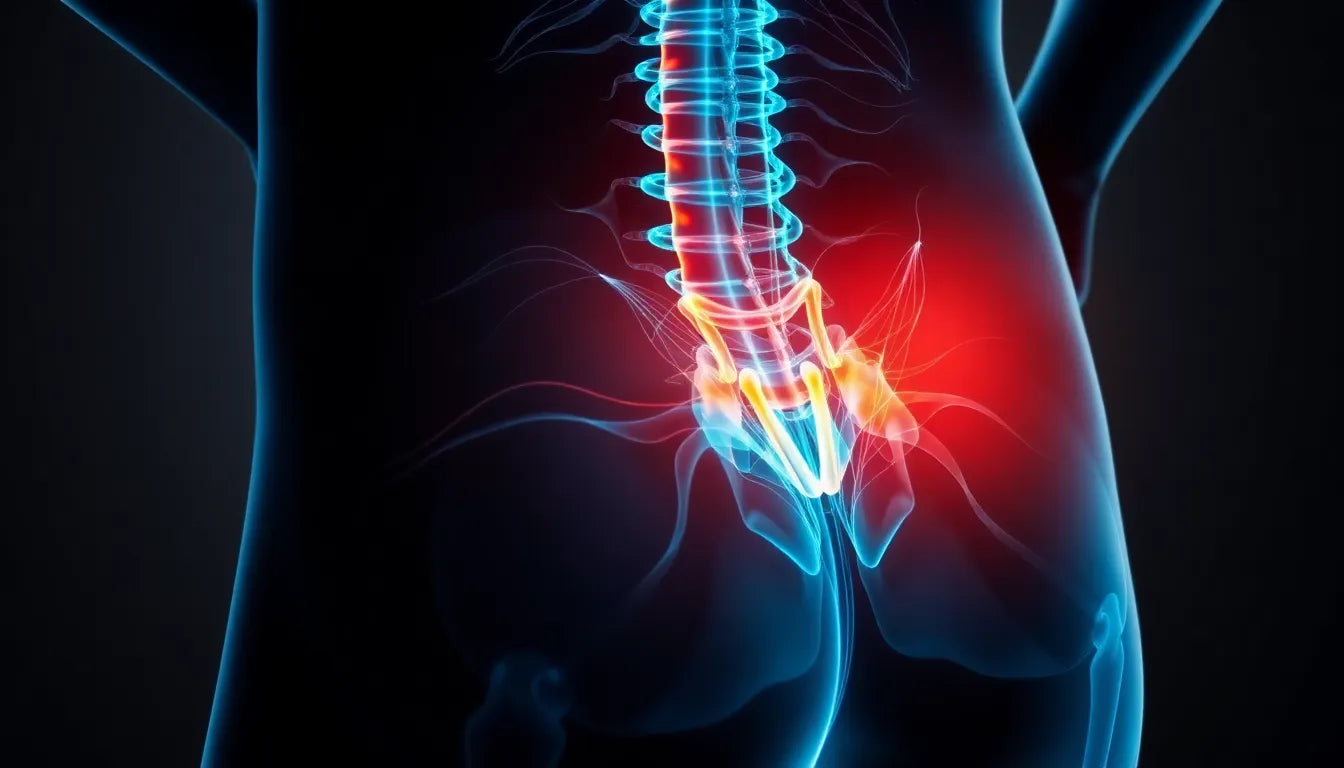Spondylosis in dogs is a condition that often flies under the radar until symptoms become noticeable. Yet, for many breeds, particularly those with a genetic predisposition, understanding this condition is crucial. Spondylosis is a degenerative spinal condition that primarily affects older dogs, but its hereditary nature means that some breeds are more susceptible than others. Recognizing the genetic factors at play can make a significant difference in how dog owners, breeders, and veterinarians approach the management and prevention of this condition.
understanding spondylosis in dogs
Spondylosis, also known as spondylosis deformans, is a degenerative condition that affects the spine. It involves the formation of bone spurs along the vertebrae, which can lead to stiffness and pain. While aging is a primary factor in its development, genetic predisposition plays a significant role, especially in certain breeds. This makes spondylosis not just an age-related issue but also a hereditary concern that requires attention from dog owners and professionals alike.
the hereditary angle: why it matters
For breeds like Boxers, German Shepherds, and Flat-Coated Retrievers, the risk of developing spondylosis is notably higher. In fact, studies suggest that up to 70% of elderly Boxers may exhibit signs of this condition. The hereditary component means that these breeds are not only more likely to develop spondylosis but may also experience symptoms earlier in life. This genetic predisposition underscores the importance of early intervention and tailored care strategies.
importance of genetic understanding
Understanding the genetic aspect of spondylosis in dogs is not just an academic exercise; it has practical implications for care and management. For breeders, this knowledge can inform breeding decisions, potentially reducing the prevalence of the condition in future generations. For veterinarians, it highlights the need for regular monitoring of at-risk breeds, allowing for early detection and intervention. Dog owners, particularly those with susceptible breeds, can benefit from this understanding by adopting preventive measures and ensuring their pets receive appropriate care.
In conclusion, while spondylosis is often associated with aging, its hereditary nature in certain breeds cannot be overlooked. By acknowledging and addressing the genetic factors involved, we can improve the quality of life for our canine companions, ensuring they remain happy and healthy well into their senior years.
genetic predisposition and breed risk in spondylosis
When it comes to spondylosis in dogs, genetic predisposition plays a pivotal role, particularly in certain breeds. Boxers, for instance, are at the highest risk, with studies indicating that up to 70% of elderly Boxers may show radiographic evidence of this condition. This striking prevalence underscores the significance of genetics in the onset and progression of spondylosis. German Shepherds and Flat-Coated Retrievers also exhibit a notable genetic predisposition, making them more susceptible to developing the condition compared to other breeds. Understanding these breed-specific risks allows dog owners and breeders to take proactive steps in managing and potentially mitigating the impact of spondylosis.
Genetic predisposition not only increases the likelihood of developing spondylosis but also contributes to an earlier onset of symptoms in affected breeds. This means that dogs with a hereditary risk may begin to exhibit signs of the condition at a younger age than those without such a predisposition. As a result, early intervention and regular veterinary check-ups become crucial in managing the condition effectively. By being aware of the breed-specific risks, dog owners can work closely with veterinarians to monitor their pets' spinal health and implement preventive measures where possible.
primary and secondary causes of spondylosis
While aging remains the primary driver of spondylosis, genetic predisposition is a significant secondary factor that cannot be overlooked. In addition to these, other contributing factors such as trauma, obesity, and intervertebral disc disease (IVDD) can exacerbate the condition. Trauma to the spine, whether due to accidents or injuries, can accelerate the degenerative process, leading to the formation of bone spurs characteristic of spondylosis. Similarly, obesity places additional strain on the spine, increasing the risk of developing the condition in predisposed breeds.
Intervertebral disc disease, a condition that affects the discs between the vertebrae, can also contribute to the development of spondylosis. Dogs with IVDD may experience changes in their spinal structure, which can lead to the formation of bone spurs as the body attempts to stabilize the affected areas. Understanding these secondary causes is essential for comprehensive management of spondylosis, as addressing these factors can help alleviate symptoms and slow the progression of the condition.
symptoms and clinical presentation
Spondylosis in dogs can present with a range of symptoms, although some dogs may remain asymptomatic. Common symptoms include pain, stiffness, and reduced mobility, which can significantly impact a dog's quality of life. Owners may notice their dogs having difficulty getting up or lying down, or they may be reluctant to engage in physical activities they once enjoyed. In severe cases, spondylosis can lead to nerve impingement, causing neurological symptoms such as weakness or paralysis in the limbs.
It's important to note that the severity of symptoms can vary widely among affected dogs. Some may only exhibit mild discomfort, while others may experience significant pain and mobility issues. Regular veterinary check-ups are crucial for early detection and management of spondylosis, particularly in breeds with a known genetic predisposition. By identifying the condition early, veterinarians can recommend appropriate interventions to manage pain and maintain mobility, ensuring affected dogs lead comfortable and active lives.
hereditary transmission and breeding considerations
Understanding the hereditary transmission of spondylosis in dogs is crucial for breeders and owners alike. While the exact mode of inheritance remains unclear, affected dogs can indeed pass on a genetic predisposition to their offspring. This means that breeding decisions should be made carefully, especially in breeds known to have a higher risk, such as Boxers, German Shepherds, and Flat-Coated Retrievers. Responsible breeding practices, including genetic screening and selecting for health traits, can help reduce the prevalence of spondylosis in future generations.
Although definitive research on the genetic inheritance patterns of spondylosis is lacking, breeders should remain vigilant. By prioritizing the health and well-being of the breed, they can make informed choices that contribute to lowering the incidence of this condition. Collaboration with veterinarians and geneticists can provide valuable insights into the best practices for breeding healthy dogs.
management and prevention strategies
Managing spondylosis in dogs involves a multifaceted approach that includes regular veterinary care, lifestyle adjustments, and preventive measures. For breeds with a known genetic predisposition, early intervention is key. Regular check-ups allow veterinarians to monitor the dog's spinal health and catch any early signs of spondylosis before symptoms become severe.
Weight management is another critical component in preventing and managing spondylosis. Keeping dogs at a healthy weight reduces the strain on their spine, which can slow the progression of the condition. Additionally, providing a balanced diet rich in nutrients that support joint health can be beneficial.
Exercise is essential for maintaining mobility and muscle strength, but it should be tailored to the individual dog's needs. Low-impact activities such as swimming or controlled leash walks can help keep dogs active without putting undue stress on their spine. In some cases, physical therapy or rehabilitation exercises may be recommended to improve flexibility and reduce pain.
For dogs already showing symptoms of spondylosis, pain management is crucial. This can include medications prescribed by a veterinarian, as well as complementary therapies like acupuncture or massage. In severe cases, surgical intervention may be necessary to relieve nerve impingement or other complications.
frequently asked questions
Can spondylosis be prevented in genetically predisposed breeds?
While spondylosis cannot be entirely prevented, early intervention and lifestyle management can help mitigate symptoms and slow its progression. Regular veterinary check-ups, weight management, and tailored exercise programs are essential strategies for at-risk breeds.
Is there a genetic test available for spondylosis in dogs?
Currently, there is no specific genetic test for spondylosis. However, regular veterinary examinations can help monitor breeds known to be at higher risk, allowing for early detection and management of the condition.
How can I tell if my dog is developing spondylosis?
Signs of spondylosis include stiffness, pain, and reduced mobility. If you notice your dog having difficulty with movements such as getting up or lying down, or if they are reluctant to engage in physical activity, it is important to consult a veterinarian for an evaluation.
Are there specific treatments for hereditary spondylosis?
Treatment for hereditary spondylosis focuses on symptom management. This can include pain relief through medication, physical therapy, and in some cases, surgical intervention. The goal is to maintain the dog's quality of life by managing pain and preserving mobility.
Sources
- My Pet Nutritionist. "Spondylosis in Dogs: Causes and Management."
- VCA Animal Hospitals. "Spondylosis in Dogs: Symptoms and Treatment."
- ToeGrips (Dr. Buzby). "Understanding Spondylosis in Dogs."
- Kingsdale. "Spondylosis in Dogs: Genetic and Age Factors."
- Walkin’ Pets. "Managing Spondylosis in Dogs: Prevention and Care."
- Pet Medical Center. "The Genetic Component of Spondylosis in Dogs."
- Stem Cell Vet. "Spondylosis in Large Breeds: Age and Genetic Factors."


















